Germany’s most populous state, North Rhine-Westphalia (NRW), is often associated with the decline of heavy industry and the area’s resulting socio-economic difficulties, so it’s not necessarily an obvious holiday destination. But, of Germany’s 16 Bundesländer it is definitely one of the most diverse in what it has to offer tourists, and probably the most accessible transport-wise.
There are direct high-speed ICE trains from Berlin and Munich to its largest city Cologne. Meanwhile three of Germany’s major airports – Düsseldorf, Köln/Bonn and Dortmund – are located in the state, so it’s definitely worth hopping over for a weekend trip or longer.
1. Cities
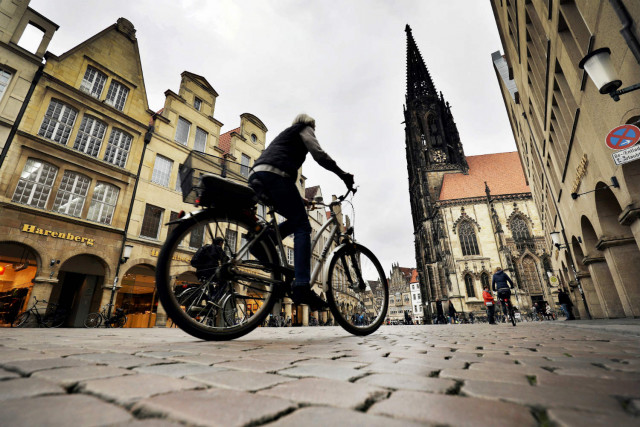 Münster: DPA
Münster: DPA
NRW has the highest urban density and the largest number of cities of any of the German states. So, not only are there plenty of city break destinations to choose from, but seeing as they are also typically well connected by train, you can easily visit several over the course of one long weekend.
Definite highlights are the Rhine cities of Düsseldorf, Bonn and Cologne, Germany’s bicycle capital Münster and the home of Germany’s best known Christmas Market outside of Bavaria, Aachen. Other less mainstream choices include: the former European capital of culture Essen, the home of the famous Schwebebahn Wuppertal or the historic Bielefeld, which contrary to popular myth does actually exist (google “Bielefeld conspiracy” if you’re confused).
2. Nature
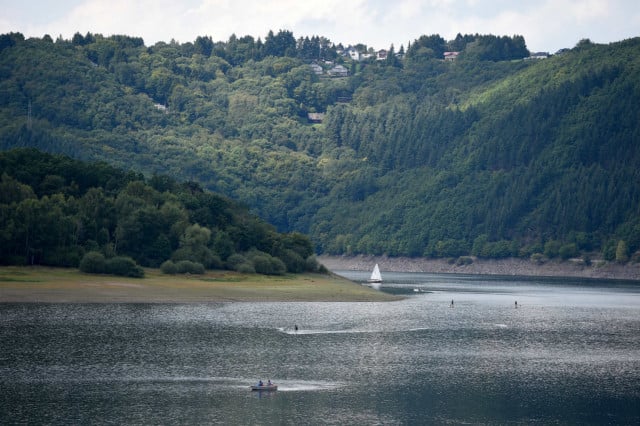 The Eifel National Park. Photo: DPA
The Eifel National Park. Photo: DPA
Despite common mis-perceptions NRW isn’t just one big sprawling urban mass, there’s also plenty of nature to be explored, making it the perfect place to combine city break with walking holiday. In the furthest northwest corner lies the Eifel National park, which is easily accessible from Cologne, Bonn and Aachen.
There’s plenty on offer for tourists who want to experience the park’s unique biodiversity, from informative wildlife trails to bird watching. As of 2014, because of the reduced intensity of light pollution, the Eifel is a designated Dark Sky Park, and one of the few places in Germany where the Milky Way can be seen without a telescope. Other green areas in NRW that are worth checking out are: the Siebengebirge just south of Bonn and the Bergischesland east of Cologne.
3. History
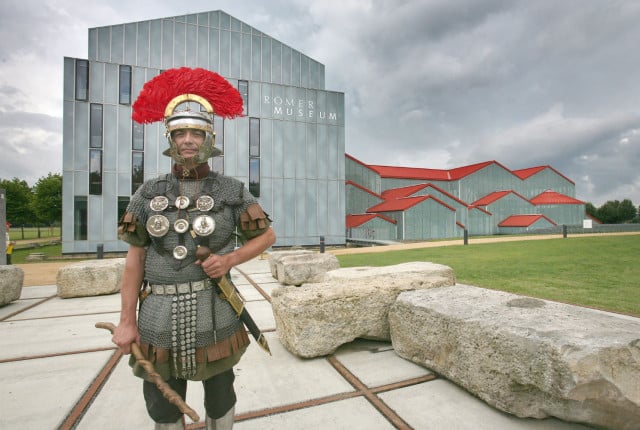 Photo: DPA
Photo: DPA
North Rhine-Westphalia in its current form came into existence in 1946, however you will still find the landscape to be steeped in history, taking you from the Stone Age to modern day. From the Neanderthal – who was discovered in the eponymous valley just outside Düsseldorf – to the archaeological park in Xanten where the former Roman settlement has been brought back to life, to Charlemagne’s throne in Aachen, to the city hall in Münster – site of the signing of the Peace of Westphalia which marked the end of the 30 Years War – there’s plenty to discover.
The Haus der Geschichte in Bonn deserves a special mention; the museum covers German history post-1945 and is an essential stop for anyone who wants to understand how modern Germany came to be.
4. Industrial history
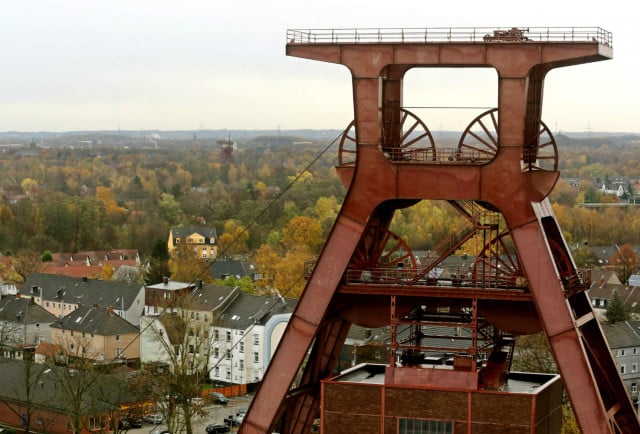
Zeche Zollverein: Photo: DPA
The Ruhr region at the centre of NRW used to be the industrial heart of Germany. Its decline had a profound effect on the region and can be seen as the root of NRW’s problems today. Far from it becoming a barren wasteland, however, the remnants of the Ruhr’s industrial history have found new life as tourist attractions.
The Industrial Heritage trail (Route der Industriekultur) encompasses museums and landmarks reflecting on the region's history. One of the highlights of the trail is Essen’s old coal mine complex, the Zeche Zollverein. The mine was shut down in 1986 and since then has been transformed into a cultural landmark and museum with many renowned architects participating in the process. In 2001 Zeche Zollverein became a UNESCO World Heritage site.
5. Art
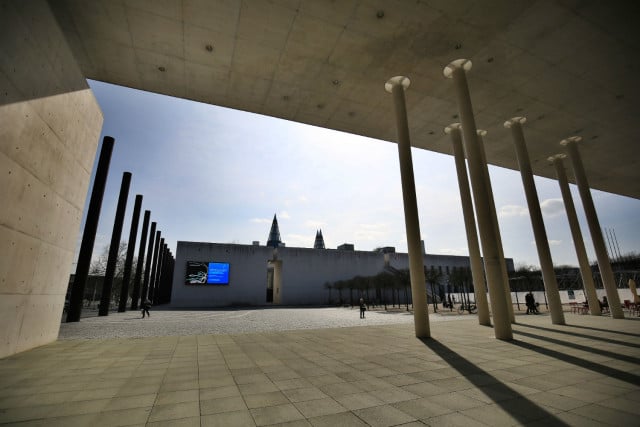 Photo: DPA
Photo: DPA
For art lovers NRW boasts several art galleries and museums that can definitely match up to the standards of their more famous European counterparts. The Bundeskunsthalle Bonn in particular often puts on one of a kind exhibitions which are definitely worth travelling for.
Cologne hosts an annual art fair, Art Cologne, whose organizers are known rivals of the more famous Art Basel. There are also many smaller art gems to be discovered such as Liverpudlian artist Tony Cragg’s sculpture park in Wuppertal or the Max Ernst Museum in Brühl.
6. Shopping
When you think of famous shopping destinations, Paris, Milan and New York come to mind, but not Dortmund. The Westenhellweg in Dortmund is one of the most frequented shopping streets in Germany and even attracts foreign visitors, mostly from neighbouring Belgium and Netherlands, and surprisingly due to budget airlines offering cheap flights, a fair few Brits too.
It doesn’t stop there though – less than an hour from Dortmund, Oberhausen boasts the Centro, Europe’s biggest indoor shopping mall. If your tastes are more upmarket, you should look no further than the Königsallee in Germany’s fashion capital Düsseldorf, where well known luxury brands sit next to smaller exclusive boutiques.
7. Architecture
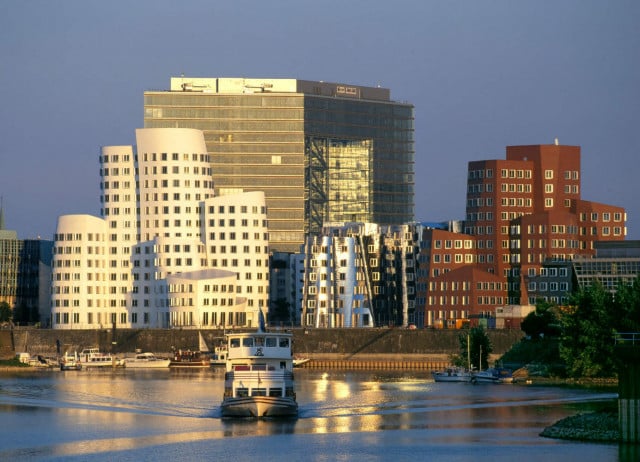 Düsseldorf harbour. Photo: DPA
Düsseldorf harbour. Photo: DPA
North Rhine-Westphalia boasts plenty of historic monuments, with the Cologne Cathedral naturally being the most well known. However it also has plenty to offer in terms of more modern architecture.
Some prominent examples are the eccentric looking office buildings in Düsseldorf’s harbour district designed by Frank Gehry and Neviges’ church, which was designed in the brutalist style by the famous German architect Gottfried Böhm. Finally the Haus Esters and Haus Lange in Krefeld, villas in the Bauhaus style created by prominent architect of the movement, Mies van der Rohe, are certainly worth a visit.
8. Karneval
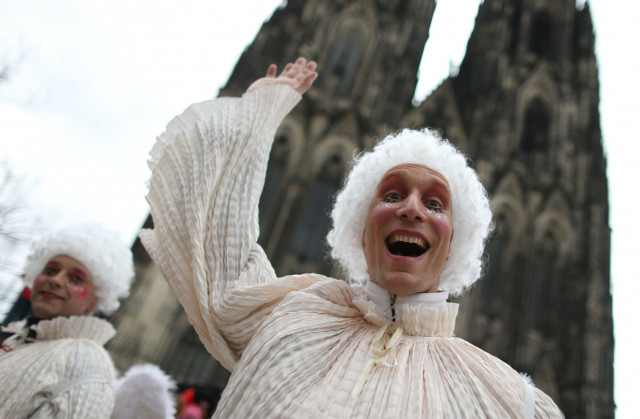 Photo: DPA
Photo: DPA
Karneval or Fasching is celebrated to some extent in most parts of Germany, but no one can quite beat the enthusiasm of NRW’s Rhine cities, with the Karneval capital being without a doubt Cologne. Known as the “fünfte Jahreszeit” (the fifth season) Karneval officially begins on either the 11th of November or 6th of January, depending on the custom of the area and reaches its climax in the week before Ash Wednesday, with most cities holding big parades on the Monday (Rosenmontag).
In Cologne, where a particular attachment to the celebrations stems back to a ban under French occupation in 1795, there is practically a week-long nonstop street party, so this is the best place to travel to if you want the authentic Karneval experience.
9. Food
Like any region in Germany, when it comes to food NRW has several different regional specialities, one of the more unusual being the Rhenish Himmel und Äd (“Heaven and Earth”- dish consisting of fried black pudding, potato mash, fried onion and applesauce). However it’s not just the local dishes that are worth the trip.
NRW is the most ethnically diverse of the Bundesländer, which is also reflected in the food on offer. A real insider tip here is, for probably the most authentic Japanese food in Germany, to look no further than Düsseldorf. The city has been the centre of Japanese business in Germany for years, and has a small but culturally influential Japanese minority.
10. Beer
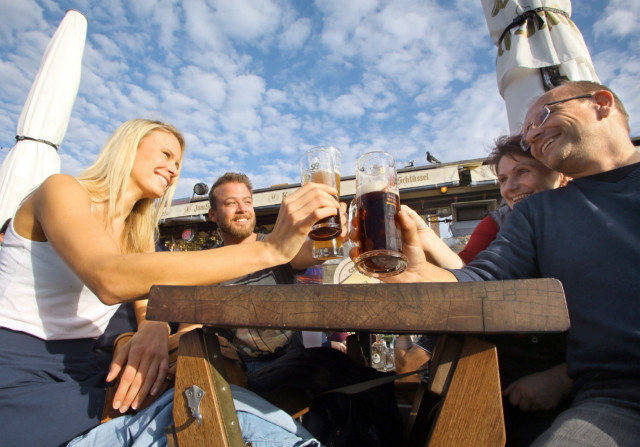 Photo: DPA
Photo: DPA
This might come somewhat as a surprise to Bavarians, but beer from NRW is the most popular in Germany (determined by consumed amount). In NRW the beer you drink is often strongly tied to your sense of local identity. Düsseldorf and Cologne’s infamous rivalry also extends to a dislike of each other’s beers (Alt and Kölsch, respectively). In recent years, the craft beer trend has taken hold, so as well as imports you will also be able to find locally brewed concoctions.
As you would expect there are multiple opportunities to consume your beverage of choice, whether this be at the “längste Theke der Welt” in Düsseldorf (translated: the longest bar in the world, colloquially refers to Bolkerstraße, the street with the most bars in Düsseldorf’s old town), the Cranger Kirmes in Herne, one of the largest Volksfeste in Germany or after a tour of one of the many breweries.
This article was originally published on February 1st, 2018.
READ ALSO: The German beer industry is failing to live up to its potential


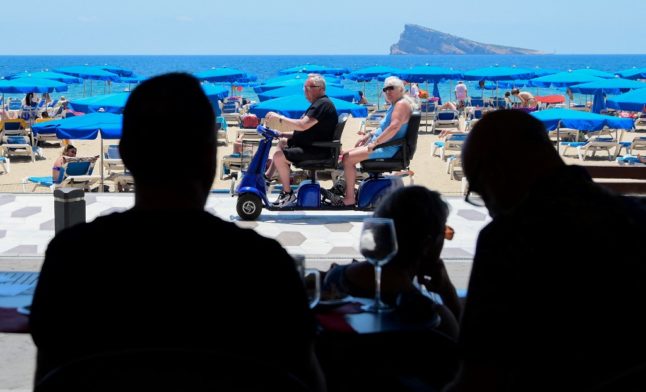
 Please whitelist us to continue reading.
Please whitelist us to continue reading.